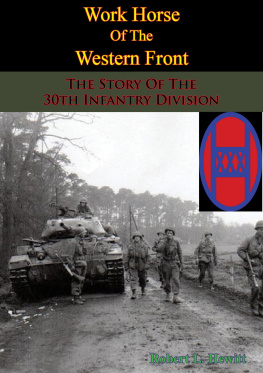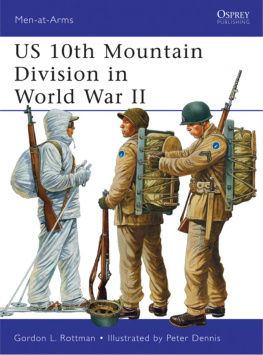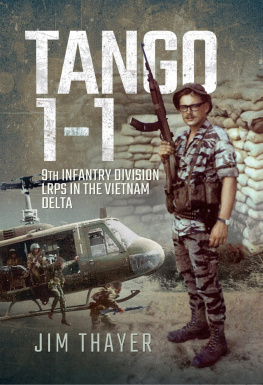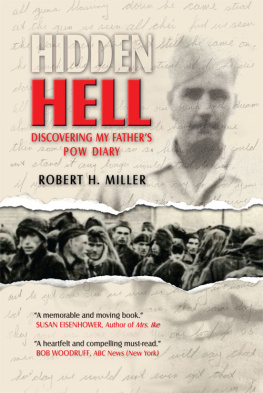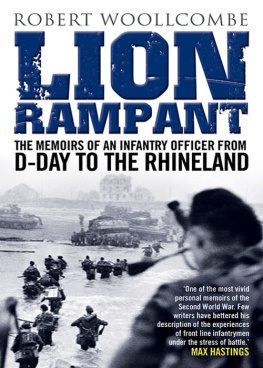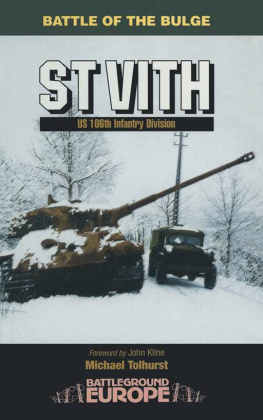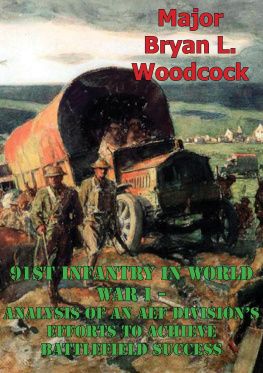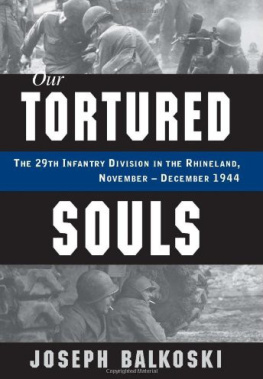Robert L. Hewitt - Work Horse of the Western Front; The Story of the 30th Infantry Division
Here you can read online Robert L. Hewitt - Work Horse of the Western Front; The Story of the 30th Infantry Division full text of the book (entire story) in english for free. Download pdf and epub, get meaning, cover and reviews about this ebook. year: 2015, publisher: Pickle Partners Publishing, genre: Non-fiction. Description of the work, (preface) as well as reviews are available. Best literature library LitArk.com created for fans of good reading and offers a wide selection of genres:
Romance novel
Science fiction
Adventure
Detective
Science
History
Home and family
Prose
Art
Politics
Computer
Non-fiction
Religion
Business
Children
Humor
Choose a favorite category and find really read worthwhile books. Enjoy immersion in the world of imagination, feel the emotions of the characters or learn something new for yourself, make an fascinating discovery.
- Book:Work Horse of the Western Front; The Story of the 30th Infantry Division
- Author:
- Publisher:Pickle Partners Publishing
- Genre:
- Year:2015
- Rating:3 / 5
- Favourites:Add to favourites
- Your mark:
- 60
- 1
- 2
- 3
- 4
- 5
Work Horse of the Western Front; The Story of the 30th Infantry Division: summary, description and annotation
We offer to read an annotation, description, summary or preface (depends on what the author of the book "Work Horse of the Western Front; The Story of the 30th Infantry Division" wrote himself). If you haven't found the necessary information about the book — write in the comments, we will try to find it.
Robert L. Hewitt: author's other books
Who wrote Work Horse of the Western Front; The Story of the 30th Infantry Division? Find out the surname, the name of the author of the book and a list of all author's works by series.
Work Horse of the Western Front; The Story of the 30th Infantry Division — read online for free the complete book (whole text) full work
Below is the text of the book, divided by pages. System saving the place of the last page read, allows you to conveniently read the book "Work Horse of the Western Front; The Story of the 30th Infantry Division" online for free, without having to search again every time where you left off. Put a bookmark, and you can go to the page where you finished reading at any time.
Font size:
Interval:
Bookmark:


This edition is published by PICKLE PARTNERS PUBLISHINGwww.picklepartnerspublishing.com
To join our mailing list for new titles or for issues with our books picklepublishing@gmail.com
Or on Facebook
Text originally published in 1946 under the same title.
Pickle Partners Publishing 2015, all rights reserved. No part of this publication may be reproduced, stored in a retrieval system or transmitted by any means, electrical, mechanical or otherwise without the written permission of the copyright holder.
Publishers Note
Although in most cases we have retained the Authors original spelling and grammar to authentically reproduce the work of the Author and the original intent of such material, some additional notes and clarifications have been added for the modern readers benefit.
We have also made every effort to include all maps and illustrations of the original edition the limitations of formatting do not allow of including larger maps, we will upload as many of these maps as possible.
WORK HORSE OF THE WESTERN FRONT: THE STORY OF THE 30TH INFANTRY DIVISION
BY
ROBERT L. HEWITT
On the Rhine with the 30th Infantry Division, March 24(AP)The American Armys work horse division, which the Germans nicknamed Roosevelts SS, more than made up for missing the Normandy landing by spearheading the Ninth Armys drive across the Rhine. One of the finest divisions in the American Army, the 30th has taken more than its share of tough fighting on the Western Front....
Wes Gallagher, in an Associated Press dispatch
Contents
To THE VETERANS OF THE 30TH:
In this history of your fight on the Western Front I take my final opportunity to tell you once more the pride with which I commanded the Old Hickory Division in battle.
It is not necessary for me to remind you of the trials and triumphs we shared through France, Belgium, Holland and Germany, for they are covered in the body of this work.
But I do feel it necessary to convey once more the appreciation my superiors and I felt for the tremendously difficult tasks you completed so successfully during the course of our campaigns. Time and again, corps and army commanders commended your work in official correspondence.
Our Division was awarded a Fourragre by the Belgian Government for its contribution to the early work of liberation in Belgium and for the fighting in the Ardennes. In addition, at least twelve separate units within the Division received the Distinguished Unit Citation. The pride I feel in these citations turns first to you, the men of the 30th whose strength and courage and tenacity carried you through to one victory after another.
I sincerely trust you will have as much success in your future activities as you have had in your past campaigning. By your actions in war, you have earned happiness in peace. May you enjoy it.

L ELAND . H OBBS
Major General, U. S. Army

More than 60 American divisions participated in the defeat of Germany in 1944-45. This is the story of one of the best of them, a division which fought continually from the Normandy beachhead to the banks of the Elbe River in the heart of Germany.
In a narrow sense this is a single units story. If it conveys to the men who fought Old Hickorys battles a better understanding of how they worked together and gained skill in what was, for most, an alien profession, it will have succeeded in its primary purpose.
In another sense, however, the 30ths history illustrates what happened to a million other men in Europe. They fought with and were loyal to other divisions. But they struggled against approximately the same obstacles of terrain, enemy and the sheer complexity of their jobs. They too, were mainly civilian soldiers.
Work Horse of the Western Front is as accurate and honest an account as the writer could make it under the circumstances. Waging war is an exacting business undertaken under conditions which make for confusion and snafu. The writer has taken the facts as he saw them, the bad as well as the good, with the conviction that he would slight the very real achievements of the Division if he attempted to present a saccharine picture of inevitable triumphs. The measure of a great fighting unit is not that it never runs into difficulties but that it minimizes its errors and gains by experience. By these standards, Old Hickory was a great divisionas is evidenced by the caliber of the tasks it was called upon to perform.
Much of the book is based on the official after-action reports of the units concerned and of the Division staff sections. These reports, prepared monthly in the rush of battle conditions, are necessarily condensed and occasionally in error. They have been supplemented as much as possible by personal interviews, by the recollections of the writer, who was Assistant Intelligence Officer of the Division during the entire fighting period, and by all additional data he could obtain in Europe. In this connection, the information obtained by the Theater Historical Section, through interviews with all ranks from buck privates on up, has been extremely valuable. The excellent stenographic record of the Commanding Generals telephone conversations provided vital data on the exercise of command. Much of the manuscript was reviewed by the commanders of the principal units of the Division and by the chiefs of Division staff sections. The wide scattering of personnel of the Division even before its deactivation in November 1945, however, made complete review of this type impractical.
As a history issued under Division auspices, the entire manuscript was reviewed and approved by Major General Leland S. Hobbs, the 30ths commander in combat. However, the writer was given virtually carte blanche in preparation of the manuscript and must consider any errors of fact or emphasis his own. Undoubtedly the descriptions here of some engagements will vary from the recollections of some readers who participated in the actions involved. It is hoped that these discrepancies will be confined to minor details.
So many members of the Division assisted in the preparation of the book by supplying information and advice that it is impossible to name them all. However, the author wishes in particular to acknowledge the work of First Lieutenant William E. McKenzie, who planned and edited the photograph section, and Sergeant Charles L. Cassar, who prepared the imaginative route diagrams which appear on the inside covers. Majors Frank Ferris and Kenneth W. Hechler, Captain John Henderson, and First Lieutenants George Tuttle and Robert Merriam, all of the Theater Historical Section, were most helpful in supplying material, much of which they had obtained themselves in the field. First Lieutenant Haley F. Thomas has handled sales and distribution of the book to members and ex-members of the Division.
R. L. H.
This book is the story of a division in battle and is almost entirely concerned with the eleven months between June 1944, when the 30th Infantry Division landed on Omaha Beach in Normandy, and May 1945, whensitting in place on the Elbe River at Magdeburgit learned that the war in Europe was over. So, in a sense, the previous phases of Old Hickorys storyits record in World War I, and its history as a National Guard organization during the two decades that intervened between the two wars, and even the long months of training in the United States and Englandare somewhat foreign to the purpose of this narrative. Nevertheless, they deserve some mention. Only a handful of the men who fought with the Division in 1918 were on hand to fight again with it in 1944-45. Most of the National Guardsmen who formed the bulk of the Division when it was mustered into Federal service in 1940 had departed elsewhere by the time the 30th landed in France. Many of the men who fought with the 30th in Europe joined it in the heat of battle. Yet knowledge of the past history of the organization, stretching back even before World War I, had its influence on the 30ths conduct in battle. And the training period at least set up most of the key figures of the Division team and moulded the way that Old Hickory would go about its business.
Next pageFont size:
Interval:
Bookmark:
Similar books «Work Horse of the Western Front; The Story of the 30th Infantry Division»
Look at similar books to Work Horse of the Western Front; The Story of the 30th Infantry Division. We have selected literature similar in name and meaning in the hope of providing readers with more options to find new, interesting, not yet read works.
Discussion, reviews of the book Work Horse of the Western Front; The Story of the 30th Infantry Division and just readers' own opinions. Leave your comments, write what you think about the work, its meaning or the main characters. Specify what exactly you liked and what you didn't like, and why you think so.

